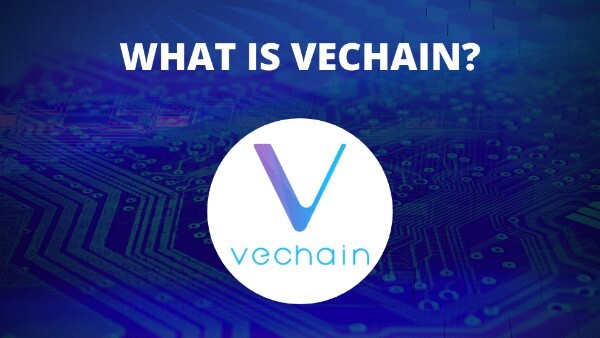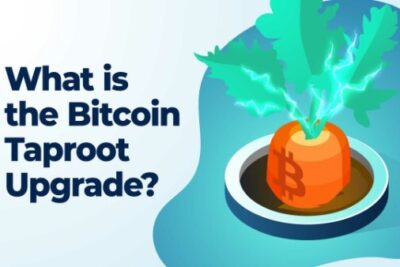

Cryptocurrency Explained: What Is VeChain And How Does VeChain Work?
29 March 2022
Over the past decade, blockchain technology has established itself as an incredibly competent tool with applications in almost every sector imaginable. However, making use of its advantages may be a difficult and costly undertaking for organizations owing to the expenses associated with building and operating blockchain-based apps.
VeChain’s mission is to remove entry barriers and enable existing firms to digitize their operations, generating value and resolving real-world economic challenges via the use of VeChain’s full suite of off-the-shelf smart contract-powered solutions.
VeChain is a cryptocurrency and software platform that is integrated into the VeChainThor blockchain, enabling the use of two distinct coins and smart contracts. VeChain is especially advantageous for logistics and monitoring, which might result in increased interest from the shipping, retail, manufacturing, warehousing, and grocery sectors, among others.
VeChain’s unique supply chain emphasis may make it an intriguing addition to your cryptocurrency strategy. bePAY will discuss VeChian in detail in this piece; continue reading to understand what is VeChain, and how does it work? The unique features it provides, and if is VeChain a good investment that makes sense for your cryptocurrency portfolio.
What Is VeChain?
To enhance supply chain management and commercial operations, VeChain is a distributed ledger platform. Its objective is to leverage distributed ledger technology to simplify these operations and information flow in complicated supply chains.
VeChain’s platform is comprised of two separate tokens: VeChain Token (VET) and VeChainThor Energy Token (VTHO). The former is used to transmit currency throughout VeChain’s network, while the latter serves as the energy source or “gas” for smart contract transactions.
Main elements of VeChain:
- Decoupling data silos using VeChain, an enterprise blockchain system, is the goal of this technology.
- Additionally, VeChain aspires to be a leading platform for initial coin offers (ICOs) and transactions between Internet of Things (IoT)-connected devices.
- VeChain utilizes two tokens: The VeChain token (VET) as the value layer and the VeChain Thor Energy token (VTHO) as the smart contract layer.

VeChain explained
VeChain’s mission statement indicates that the company’s objective is to “create a trustless and distributed business ecosystem platform that enables transparent information flow, efficient cooperation, and high-speed value transfers”.
Currently, supply chain data for business operations is compartmentalized across various stakeholders in silos. This affects information flow, which is once again segmented amongst stakeholders.
According to the VeChain whitepaper, blockchain technology may resolve “this unequal information issue by reclaiming and empowering data owners”. The VeChain platform promises to give authorized stakeholders with a 360-degree view of critical information related to a product and its business operations as storage, transit, and supply and to increase market transparency.
>> Reading more detail about VeChain information via VeChain Whitepaper
How Does VeChain Work?
With the VeChainThor Blockchain, VeChain can host enterprise-scale decentralized applications (dApps) with lightning-fast performance and a flexible general-purpose smart contract distributed ledger.
It uses a unique consensus mechanism called Proof of Authority (PoA) to keep the blockchain and transactions safe. Using a network of 101 Authority Masternode operators, the protocol and the VeChainThor governance rules are upheld while safe transactions are processed and smart contract activities are executed.
As a Masternode operator, you must be able to contribute to the network’s development in some way whether as a developer, KOL, corporation, or any other entity of net benefit to the growth, and pass severe KYC checks under the leadership of the steering committee.
To separate speculation from operational expenditures, the VeChainThor blockchain adopts a two-token economy scheme. For transactions that need gas, VeChainThor (VTHO) and VeChain (VET) are the two tokens that are utilized in the VeChain ecosystem (including transaction fees and smart contract execution costs). For firms, this guarantees that their running expenses are not susceptible to the whims of investors or excessive market volatility.

VeChain explained: how does it work?
As the company’s flagship product, VeChain ToolChain is renowned across the world. For both small and big enterprises, this is an effective blockchain application development platform that offers a range of blockchain as service, platform as service, and software service solutions. It makes it easy to design and deploy blockchain solutions within record time.
It’s possible to construct strong DApps with little coding using the tools provided by VeChain ToolChain’s PaaS service. Food traceability, digital carbon footprint, and a risk assessment tool called VeTrust are among the off-the-shelf services included. Ultimately, VeChain ToolChain allows organizations to reap the advantages of blockchain technology without having to develop everything from the ground up themselves.
>> Read also: What is COTI and how does it work?
What Are VeChain’s Pros And Cons?
VeChain has both advantages and disadvantages since it focuses on business blockchain solutions that are scalable.
VeChain Pros
To begin, VeChain has successfully formed collaborations with worldwide and/or multi-national organizations, giving real-world services and solutions, as stated in their mission statement.
An IoT-based supply chain management platform has managed to stretch its blockchain powers and integrate them with IoT functionality to achieve this goal, responding to current high-tech business issues. Transaction costs have been more predictable because of the implementation of a two-token scheme.
VeChain Cons
Possessing a more centralized authority on a decentralized network raises certain concerns for some users, even though the consensus proof-of-authority approach offers an intriguing middle ground between proof-of-work and proof-of-stake.

VeChain’s pros and cons
Setting up a master node and being allowed to stake VET and vote on governance matters necessitates an expensive investment. Supply chain management (blockchain or not) is a competitive field, and VeChain’s emphasis on enabling firms to construct their dApps is no longer an edge.
Pros
- Successful collaborations with multinational corporations have been achieved by VeChain.
- An emphasis on scalable, transparent business solutions may offer it an advantage.
- Transaction expenses are more predictable because of the two-token approach.
Cons
- This PoA mechanism from VeChain may not be as effective as it seems to be.
- More expensive to set up and maintain a node.
- Has to contend with a lot of competition for its services.
What Is VeChain Used For?
Let’s take a look at some of VeChain’s most important applications. But this is hardly a full list. More Dapps may be found in the VeChainWorld collection.
Food Safety
Global food markets might benefit from the use of blockchain technology. All parts of the supply chain, including goods, transportation, and warehouses, may employ the VeChain-enabled Internet of Things (IoT). The VeChainThor blockchain may then be used to upload, verify, and store the environmental and location-based data collected by these devices. Several enterprises, like Shenzhen Yuhongtai Foods, have already implemented solutions of this kind.
Anti-Counterfeiting
Luxury goods counterfeiting is a major issue. Owners may be confident of the authenticity of their products by adding an encrypted chip and then utilizing the chip to record and track shipping, warehousing, maintenance, and resale. For Shanghai Waigaoqiao Direct Imported Goods and Renault luxury car components, this has been utilized for the premium wine track.

What is VeChain used for?
Medicare System
It’s a well-known fact that healthcare records systems are outdated. This vital data may be saved securely on the blockchain, only with patients as well as other authorized parties having access, instead of utilizing wasteful and insecure record systems. In 2021, patients at the Mediterranean Hospital of Cyprus and the Aretaeio Hospital will have access to an E-HCert App built on the VeChain blockchain.
Tracking Carbon Footprints
With this approach, users may participate in a carbon-saving plan by helping to reduce emissions by measuring their carbon footprints. It is possible to get credits for energy services if smart devices, such as automobiles or appliances, demonstrate that the customer is creating less carbon. VeChain is already in use by Chinese electric vehicle manufacturer BYD.
>> Read also: Adequately fact about what is TomoChain and how does it work?
FAQs About VeChain
Why Is VeChain (VET) Worth Investing In?
It is possible to hold, spend, or stake VeChain’s primary cryptocurrency, VET. As a result, dApp developers using VeChain will have to utilize VTHO to fund their transactions. VET may see an increase in demand if these applications prove to be popular.
Voting on changes to the VeChain network, such as raising or reducing the amount of VTHO, is also available to users who possess and stake VET tokens. From a luxury goods producer to a multinational retailer to a worldwide consulting company, VeChain has partnered with a variety of businesses. VeChain’s real-world skills and solutions may be making use of these linkages.
Is VeChain A Good Investment?
That’s a possibility. In 2021, the value of VeChain had more than doubled. However, caution is advised. It’s not uncommon for cryptocurrency values to fluctuate greatly. Make sure you conduct your research before deciding how much money to invest and never invest more than you can afford to lose.

Is VeChain a good investment?
Who Invented VeChain?
Former Louis Vuitton China CIO Sunny Lu is the founder of VeChain, which was launched in 2015. An IoT (Internet of Things) application for supply chain management was created by combining his knowledge of luxury products with blockchain technology. Through a non-profit organization named the VeChain Foundation, he continues to serve as the company’s CEO.
- VeChain was created by Sunny Lu in 2015.
- VeChain 0.1v is released in June 2016.
- As part of an incubation initiative, PwC has partnered with VeChain.
- Summer 2017: The VeChain Foundation is officially launched.
- VEN was renamed VET in February 2018.
- A new main-net was introduced in the Spring of 2018.
- Launch of mobile wallet in 2018.
What Is VET Coin?
What Is a VET coin? Platform-based token VET coin is built on Proof-of-Stake technology and offers a more eco-friendly version of Bitcoin. To execute all transactions on VeChain, the VET coin is used as energy, which is also used by the community.
To Sum Up
Blockchain technology’s impact on our current world may once again be seen in VeChain. For long-term brand transparency and efficiency improvements, companies are turning to VeChain as a strategic partner.
There must be huge value in the VeChain blockchain if so many high-profile users have noticed significant benefits in their businesses. As a result, the value of VeChain’s native currency, VET, should rise in tandem with the network’s popularity and demand.
The total supply of VeChain, like many others, is restricted at 86.7 billion. There are no more tokens to be made. This means VeChain investors are betting on the price of VET rising as more cash is invested in VeChain as a result of new collaborations and higher use.
Ultimately, VeChain is a cryptocurrency that might be said to have some revolutionary potential. Any cryptocurrency investment comes with its own set of hazards. Avoid placing all of your eggs in a single extremely volatile cryptocurrency basket.
Hopefully, this post will be helpful for you when pointing out VeChain is explained, and how does VeChain work? To learn more about other cryptocurrency topics, click here

What Is Taproot Bitcoin? How Does It Affect Bitcoin?
24 June 2022











